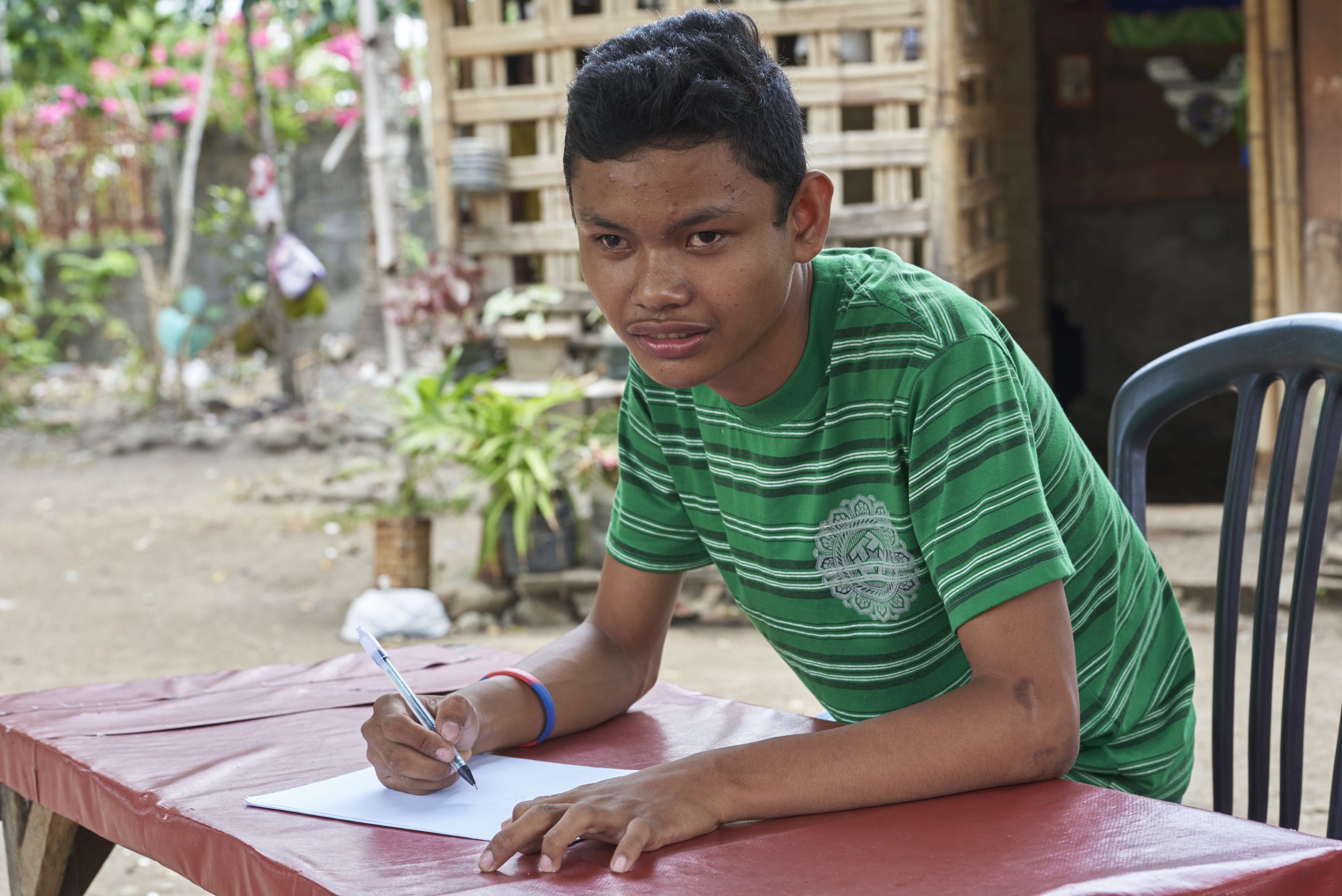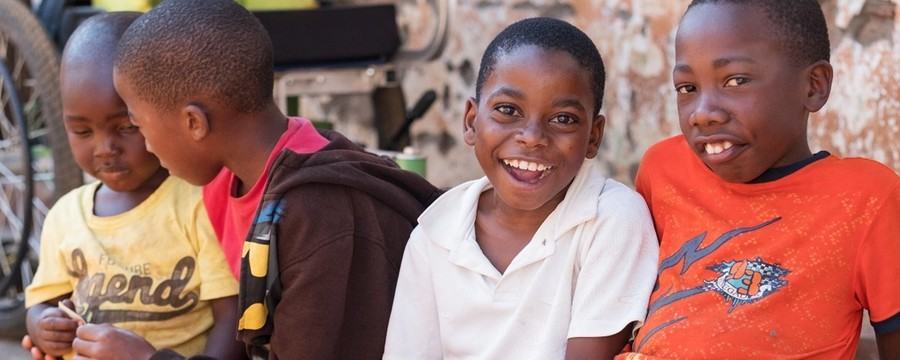Evolving healthcare needs

Share this step
As a child matures into adolescence and adulthood, their healthcare needs will change and evolve.
Adolescents with developmental disabilities need access to new services, as well as information about how to more independently manage and maintain good health as an adult.1 In some settings, entering adulthood may also mean transitioning into adult healthcare services.2
In this step, we want to think more about improving healthcare access in the context of issues relevant to older children and adolescents with developmental disabilities.
Access to sexual and reproductive health services and information
There are various examples of new services for us to consider, but to keep things simple, we will discuss just one – sexual and reproductive health services.
With adolescence, comes puberty, a major transition for any child. As well as physical changes, puberty can cause changes to mood, emotions and behaviours. Adolescents with developmental disabilities may also begin to express more interest in sexual relationships, marriage and children. However, information on sexual and reproductive health is often inaccessible to young people with developmental disabilities. Much of this education takes place in school, but in a similar way to healthcare services, many children and adolescents with developmental disabilities are excluded from school (a topic we will be discussing in more depth next week). In addition, many healthcare professionals and parents do not speak to young people with developmental disabilities about sex and sexual health, as they may feel it isn’t relevant to them or of interest.
This means that many adolescents with developmental disabilities have low levels of sexual and reproductive health knowledge. For example, research in Ethiopia demonstrated that 70% of young people with disabilities did not know when pregnancy is most likely to occur during the menstrual cycle.3 Limited knowledge can also mean that young people with developmental disabilities are unaware of sexually transmitted diseases, such as HIV, which puts them at higher risk for these conditions.
Maynor (12) playing baseball in Nicaragua. © CBM/argum/Einberger
Of course, information should be given in a developmentally appropriate way, but if these topics are not discussed, an adolescent’s sexual development can be restricted and inappropriate behaviours, frustration and confusion may become more common. In some young people with developmental disabilities, this can result in challenging behaviours, such as public masturbation.
For girls and young women, this lack of sexual and reproductive health knowledge can be particularly detrimental, as they are vulnerable to abuse, including forced contraception, sterilisation and abortion.4 Many healthcare professionals withhold knowledge to protect girls, but evidence demonstrates the opposite is true – more education on this topic reduces the risk of abuse.5 In the next step, we will look at an example from Nepal, discussing another important consideration for young women – menstruation and water, sanitation and hygiene (WASH).
Healthcare professionals and the global community must recognise that adolescents with developmental disabilities are entitled to sexual and reproductive health education, in order for them to make informed decisions about their own sexual health.
Anibal Alejandro (14) at his home in Guatemala. © CBM/argum/Einberger
Transition to adult services
When thinking about adolescence, it may also be important for us to consider the transition from child to adult services. Now, this isn’t applicable in all settings, as many healthcare systems do not operate child and adult services separately. But it is an issue in some countries and important to consider.
The transition from childhood to adulthood can present increased opportunities for independence and autonomous decision-making, but there can be concerns about how to meet the health and social care needs of young people with developmental disabilities. You may have heard mention of the “paediatric cliff edge”, where services fall away as a young person leaves childhood services, even when their needs for these services remain unchanged.6
The relationship between a healthcare professional, the child and the family is central to successful healthcare. Having known a child from youth, the healthcare professional will know their strengths and challenges, and have invaluable knowledge about their life and family. Leaving a trusted childhood professional, such as a paediatrician, can be a disorienting and distressing process. Services need to support young people with developmental disabilities to make this transition to adult services with confidence and competence.
The process of transition into adult-services should begin in early adolescence (as early as 12) giving families, and importantly the child, time to adapt. Healthcare professionals can work with young people and their families to create a well-structured transition plan. It is often helpful to have a child interact with healthcare professionals in adult services whilst still attending their regular childhood service. Visiting a healthcare professional in adult services just once a year in the lead up to transition can make the process a gradual, smooth operation, instead of a sudden leap.7
 © CBM/Patwary
© CBM/Patwary
Successful transition planning is:
- Person-centred, focussing on the needs and aspirations of the young person
- Multi-disciplinary, involving a number of professionals (when available), including GPs, paediatricians, nurses, adult medical specialists, child and adolescent psychologists, education specialists and social workers
- Flexible to the changing needs of the child as they continue to age
- Focussed on a range of healthcare needs, including physical, psychological and emotional
Transition checklists and self-assessments are a useful way for healthcare professionals to work with a young person with a developmental disability to manage their transition to adult services.
Independently managing health
As well as transitioning to adult services, many young people with developmental disabilities will leave their parents and their family home when they reach adulthood. They will need to start navigating healthcare services independently, without support from their parent. As with the transition to an adult service, this requires preparation from parents and healthcare professionals, helping a young person build confidence in healthcare situations. Including children with developmental disabilities in healthcare decisions and discussions from a young age will build their confidence and competence to navigate adult services.
Discussion
- As well as sexual and reproductive health, what other healthcare needs may become more apparent as a child ages?
- Have you helped a child transition from a child service to adult services? What helped make this transition easier?
Share this
Integrated Healthcare for Children with Developmental Disabilities

Integrated Healthcare for Children with Developmental Disabilities


Reach your personal and professional goals
Unlock access to hundreds of expert online courses and degrees from top universities and educators to gain accredited qualifications and professional CV-building certificates.
Join over 18 million learners to launch, switch or build upon your career, all at your own pace, across a wide range of topic areas.
Register to receive updates
-
Create an account to receive our newsletter, course recommendations and promotions.
Register for free







